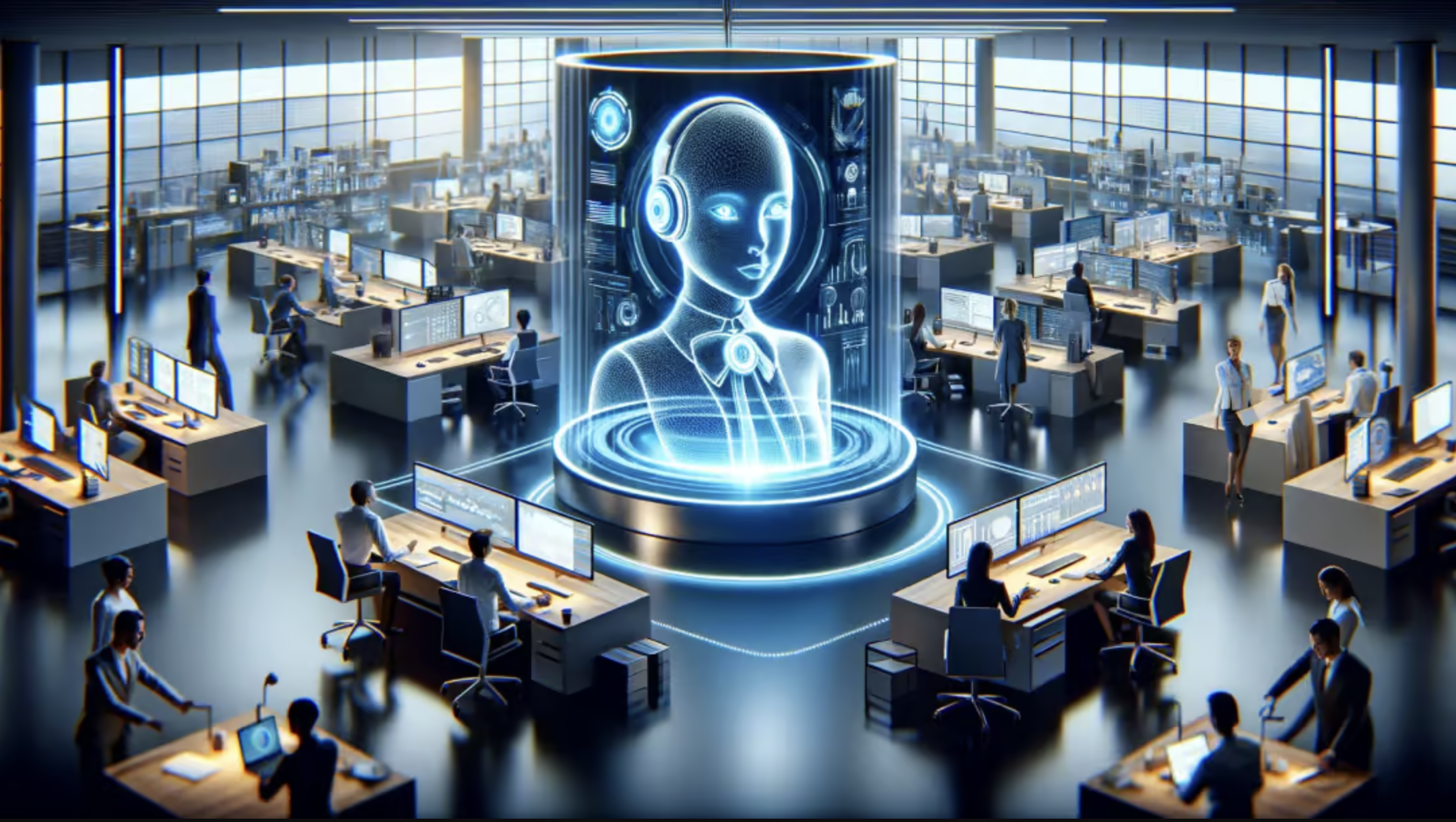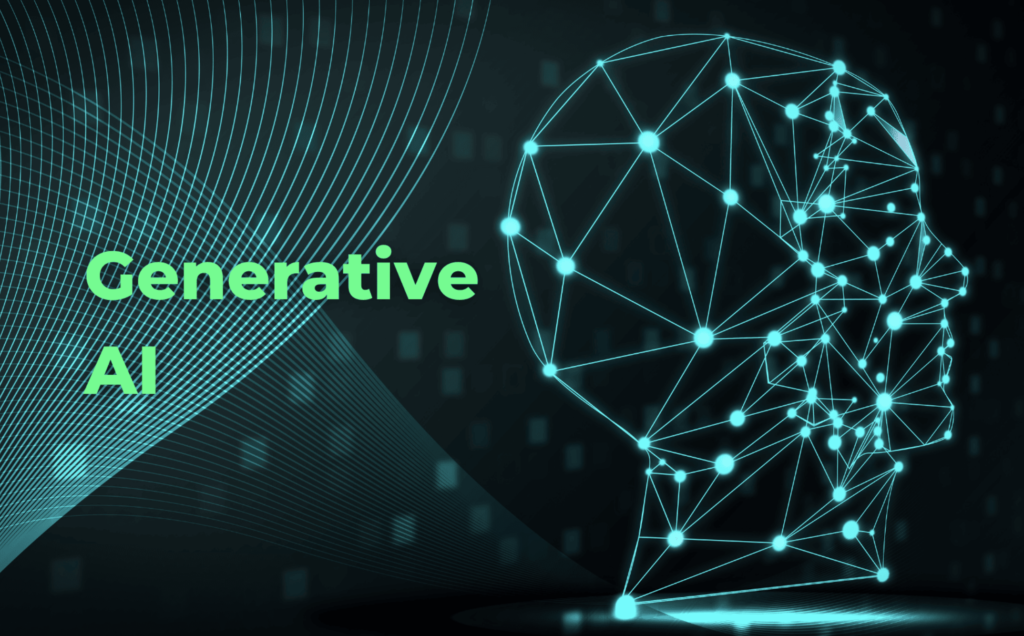
Generative AI Illustration (Image by Unite AI)

Generative AI Illustration (Image by Unite AI)
We are moving into tech industry trends where software writes personalized marketing campaigns, designs innovative products, and even creates custom software code, all on its own. Let’s face it. This isn’t science fiction – it’s the dawn of the Generative AI era. And McKinsey, a name synonymous with cutting-edge business insights, is calling it one of the most transformative tech trends of our time.
McKinsey, underscores the remarkable impact of Generative AI on today’s business landscape. With its proven track record of predicting major technological changes, McKinsey sees the immense potential of Generative AI.
They emphasize that in the coming years, a significant competitive advantage will accrue to early adopters who embrace this technology.
This technology is reshaping how companies operate, innovate, and compete. As a key tech industry trend, Generative AI offers businesses new ways to solve problems and create value.
It’s not just about automation; it’s a leap towards smarter, more efficient processes.
McKinsey’s expertise highlights how embracing this tech can be a game-changer, offering a competitive edge in a rapidly evolving digital world.
For businesses keen on staying ahead, understanding and integrating Generative AI is crucial.
It’s a clear, transformative force in the tech industry, marking a new era of business innovation.
We are all aware of the excitement and rapid adoption of Gen AI. And yes, McKinsey’s survey showed a whopping one-third of businesses are already using Gen AI.
That’s not just small-scale stuff either; C-suite leaders are actively using these tools, and 40% of companies are upping their AI investment because of Gen AI’s potential.
The real trailblazers? Those companies that were already good with AI. These ‘AI high performers’ are leveraging Gen AI way more than others, especially in areas like product development and risk management.
Now, onto the impact – it’s big. McKinsey found that in tech and financial services, Gen AI could add up to 9% to industry revenues.
But here’s a reality check: while Gen AI is spreading, many companies aren’t fully prepped for the risks, like inaccuracy or cybersecurity issues. Only 21% have set policies for Gen AI use.
And the workforce? It’s in for a change. There’s talk of reskilling employees, with nearly 40% of businesses planning to reskill over 20% of their workforce.
But the overall AI adoption hasn’t spiked yet – it’s steady, with 55% of businesses using AI in some form.
So, what we’re seeing is a transformative phase where Gen AI’s potential is clear, but the journey to fully harness it is just beginning. Exciting times, right?!
Generative AI continually reshapes the business world with its unique capabilities.
This generative AI acts as a tool that’s not just about automating tasks but really transforming how businesses create and innovate.
One area where its impact is quite noticeable is in content creation.
For instance, companies are now using Generative AI to produce original marketing content, from engaging ad copies to innovative design elements.
Then there’s product development. Companies are using these AI tools to design new products or improve existing ones.
You could say it’s like a fast track to innovation, helping companies stay ahead in competitive markets.
And it’s not just theory. Big names like Nestlé already seeing real result. Nestlé’s AI-driven product recommendations are hitting the mark.
But generative AI gets even more interesting. Generative AI redefining customer experiences and leveling the playing field for smaller businesses too.
What’s really exciting is the impact on decision-making. Generative AI helps analyze complex data, offering insights that can guide strategic decisions.
So, the potential is endless, and we’re just starting to weave this incredible technology into the fabric of business and innovation.

In general, Generative AI is about thinking in new ways. Generative AI is like a catalyst, sparking new ideas in product development.
Companies are now creating designs and concepts at an unprecedented pace, pushing the boundaries of what’s possible.
In design, AI is whipping up fresh ideas, transforming everything from fashion to furniture. It’s a real boost for innovation, helping businesses stay steps ahead of the competition.
And, for sure, generative AI streamlines operations, automating tasks that used to eat up time.
With generative AI, you have a turbocharged assistant, freeing up teams to focus on strategic thinking.
Generative AI acts as the ultimate helper from marketing to maintenance, automating tasks and analyzing data like a pro, making things run smoother and smarter.
And when it comes to competitive advantage, Generative AI is a major shift.
Generative AI is delivering personalized customer experiences, fine-tuning marketing strategies, and helping companies understand their audiences like never before.
These IT service trends are already making waves in industries such as retail, finance, and healthcare. Retailers are using AI for customized shopping experiences.
In financial services, the focus is on smarter, faster analysis and decisions. Healthcare is using AI for advanced research and patient care.
But this is just the start. Generative AI is evolving, opening doors to new possibilities.
It’s leveling the playing field for smaller businesses and fostering a collaborative future where humans and AI work hand in hand. And as it grows, navigating its ethical landscape will be key.
Getting started with Generative AI is like exploring a new way to enhance creativity for your business.
Start by identifying where it can be most useful. Whether it’s creating distinctive marketing content or accelerating product design processes.
This generative AI strategy isn’t a random process. Clearly define your goals and gather the necessary data – as if you were selecting the right tools for your creative needs, with an emphasis on quality.
The tools available offer a variety of capabilities, from creating effective marketing copy to generating visual prototypes. Choose the tool that best meets your specific needs.
Remember, AI doesn’t work on its own. It thrives with your guidance and creative input, serving as a collaborative partner to showcase its capabilities.
Much like the iterative process of a skilled artist, refinement is critical.
Monitor your AI’s performance, make adjustments, and continually feed it new data. It’s a continuous cycle of learning and improvement.
Generative AI isn’t just a trend; it’s a practical tool that, when used thoughtfully, can enhance your organization’s creative vision.
McKinsey’s insights highlight the lasting impact of generative AI on the technology industry. Generative AI is not a passing trend, but a transformative force.
McKinsey’s insights are a reminder that embracing AI isn’t optional; it’s essential for long-term success in a tech-driven world.
In order to thrive, businesses must stay up-to-date with AI trends. So start utilizing your generative AI to drive innovation, streamline operations, and strengthen competitiveness.
Staying informed and strategically integrating AI is the way forward for businesses that want to sustain their achievements.